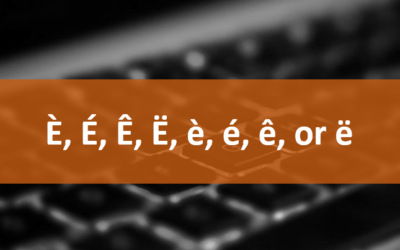Microsoft Excel: Introduction to Data Visualization with Charts
Microsoft Excel Training Series | Level 2
Course Details
Duration: 1/2 day (am)
Microsoft® Excel® Versions: 2016 | 2019 | 2021 | 365 (Windows)
Delivery Methods: Instructor-led classroom (ILC) | Virtual classroom (VC) on request
Course Dates: Check back soon for new dates | View schedule ![]()
Course Fee: $175 CDN per person + HST (bring your own device) or $225 CDN per person + HST (Avantix Learning provides device)*
Note: Public scheduled dates for this course are delivered as live instructor-led classroom training.
Course Overview
This instructor-led Excel course is designed for the user who wants to take advantage of the various types of charts in Excel 2016 and later versions. Students will learn to select contiguous and non-contiguous areas and to generate charts from data. Students will format charts using different charting tools. A variety of charts available in Excel 2016 will be created using different strategies. Throughout this course, the instructor will include numerous tips, tricks and shortcuts.
Prerequisite: Microsoft Excel: Introduction or equivalent knowledge and skills.
Custom training: This course may be delivered at your site or ours as an instructor-led or virtual classroom solution. Contact us at info@avantixlearning.ca for more information including savings for custom group training.
Related training: View all Microsoft Excel courses >
INCLUDED IN THIS COURSE
- Comprehensive course manual
- Keyboard shortcuts quick reference
- Sample and exercise files
- Refreshments (for classes conducted in Avantix Learning classrooms)
- Certificate of completion
- Follow-up email support
Course Topics
Using Excel Buttons and Themes
- Adding chart related buttons to the Quick Access Toolbar
- Applying themes to format charts consistently
Generating Charts from Data
- Selecting different types of source data
- Inserting embedded charts or charts sheets
- Moving charts to a worksheet or a chart sheet
- Generating charts with keyboard shortcuts
- Selecting a chart type
- Changing the chart type
- Using recommended chart types
- Adding alternative text to charts
Working with Source Data
- Editing source data
- Adding new data to the source
- Creating a dynamic data source
Applying Formatting to Charts
- Selecting elements in a chart
- Adding elements to a chart
- Applying chart styles and styles
- Resetting a chart
- Adding a trend line to a chart
Saving Time with Chart Templates
- Saving custom chart templates
- Applying a custom chart template
Using New Chart Types
- Creating Treemap charts
- Inserting Sunburst charts
- Generating Waterfall charts
- Creating Histogram charts
- Designing Pareto charts
- Inserting Box and Whisker charts
Inserting Sparkline Charts
- Displaying trends using in-cell charts called Sparklines
- Formatting Sparklines
Creating Timelines
- Presenting timelines with timeline charts
Charts and Word or PowerPoint
- Copying a chart to Word or PowerPoint
- Linking to Excel charts in Word or PowerPoint
Register Now for a public course at our downtown Toronto location at 1 Yonge Street, Suite 1801 (Toronto Star Building), Toronto, Ontario, Canada.
Do you need more information? Contact us!
To request this page in an alternate format, contact our staff.
*Prices subject to change.
Copyright 2024 Avantix® Learning

On-site training
Register now for a public scheduled course or contact us to discuss custom on-site or off-site training options.
Related courses
Microsoft Excel: Intermediate / Advanced
Microsoft Excel: Data Analysis with Functions, Dashboards and What-If Analysis Tools
Microsoft Excel: Visual Basic for Applications (VBA) Macros | Introduction
Microsoft Excel: Introduction to Power Query to Get and Transform Data
Microsoft Excel: Introduction to Power Pivot and Data Modelling
You may like
How to Replace Zeros (0) with Blanks in Excel
There are several strategies to replace zero values (0) with blanks in Excel. If you want to replace zero values in cells with blanks, you can use the Replace command or write a formula to return blanks. However, if you simply want to display blanks instead of zeros, you have two formatting options – create a custom number format or a conditional format.
What is Power Query in Excel?
Power Query in Excel is a powerful data transformation tool that allows you to import data from many different sources and then extract, clean, and transform the data. You will then be able to load the data into Excel or Power BI and perform further data analysis. With Power Query (also known as Get & Transform), you can set up a query once and then refresh it when new data is added. Power Query can import and clean millions of rows of data.
How to Freeze Rows in Excel (One or Multiple Rows)
You can freeze one or more rows in an Excel worksheet using the Freeze Panes command. If you freeze rows containing headings, the headings will appear when you scroll down. You can freeze columns as well so when you scroll to the right columns will be frozen.
You may also like
How to Insert or Type A with an Accent Mark in Word (À, Á, Â, Ä, à, á, â, or ä)
You can insert or type a with an accent mark in Word using built-in tools or keyboard shortcuts (including Alt code shortcuts). The letter a can be inserted with an accent in both upper or lower case. The following are common accents in upper or lower case – À, Á, Â, Ä, à, á, â, or ä.
10 Word Shortcuts to Select Text Using a Keyboard
You can use several shortcuts in Word to select text in your documents using only your keyboard. When you select text, it will typically be highlighted in grey. After you select text, you can cut, copy, or delete the selected text or apply character or paragraph formatting.
How to Insert or Type E with an Accent Mark in PowerPoint (È, É, Ê, Ë, è, é, ê, or ë)
You can insert or type e with an accent mark in PowerPoint using built-in tools or keyboard shortcuts (including Alt code shortcuts). The letter e can be inserted with an accent in both upper or lower case in text boxes or placeholders on slides, the slide master or layouts. The following are common accents in upper or lower case – È, É, Ê, Ë, è, é, ê, or ë.
Microsoft, the Microsoft logo, Microsoft Office and related Microsoft applications and logos are registered trademarks of Microsoft Corporation in Canada, US and other countries. All other trademarks are the property of the registered owners.
Avantix Learning | 1 Yonge Street, Suite 1801 (Toronto Star Building), Toronto, Ontario, Canada M5E 1W7 | info@avantixlearning.ca






